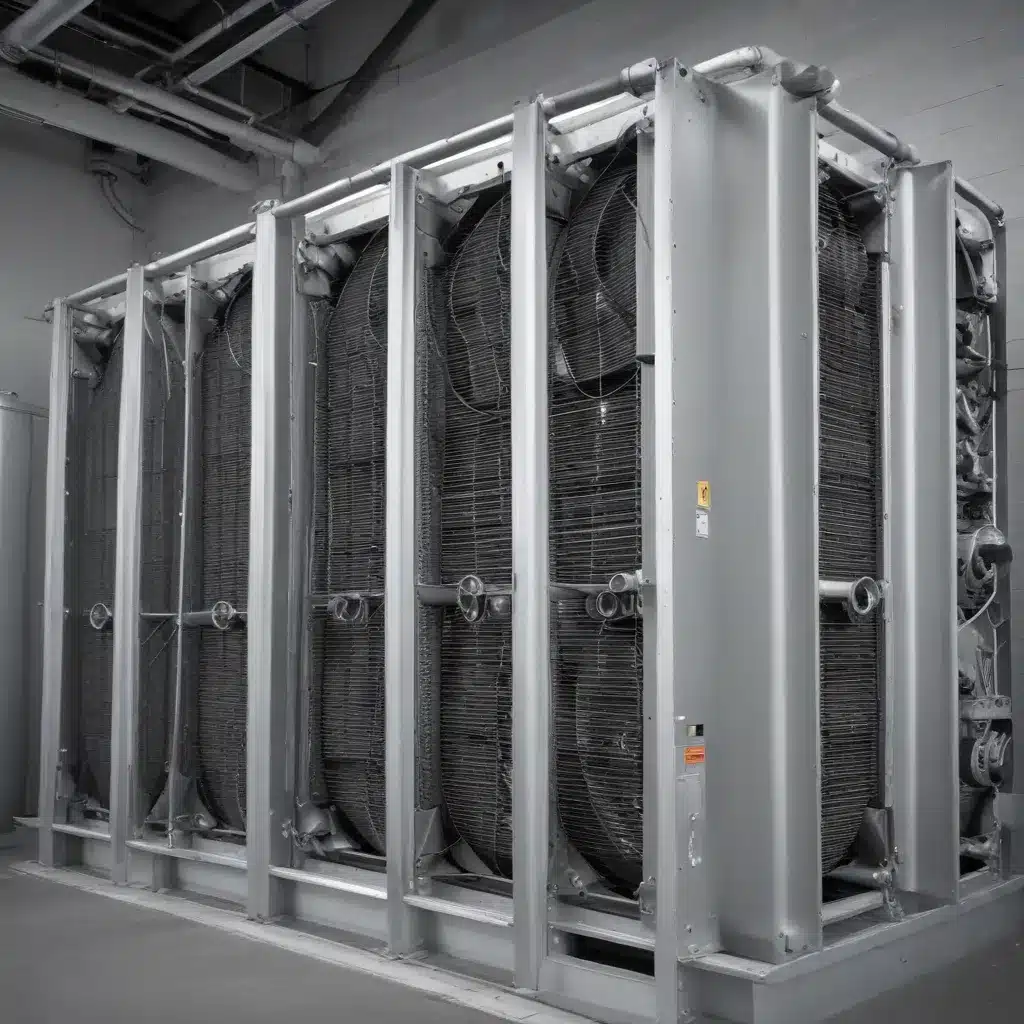
Understanding the Importance of Air-Cooled Heat Exchangers in HVAC
Air-cooled heat exchangers play a critical role in the efficiency and performance of heating, ventilation, and air conditioning (HVAC) systems across a wide range of commercial, industrial, and residential applications. As the respiratory system of buildings, HVAC accounts for a significant portion of a facility’s energy consumption, making the optimization of these heat transfer devices essential for managing energy costs and reducing environmental impact.
Each year in the U.S., an estimated three million heating and cooling systems are replaced, with over $14 billion spent on HVAC services and repairs. Heating and cooling can account for up to half of a typical home’s energy usage, underscoring the importance of high-performance HVAC equipment and installation practices in managing energy consumption. By exploring the latest research, innovations, and best practices in air-cooled heat exchanger design and operation, facility managers and HVAC professionals can unlock substantial energy and cost savings.
Selecting High-Efficiency HVAC Equipment
One of the most effective ways to enhance the energy performance of HVAC systems is to prioritize the selection of high-efficiency equipment. ENERGY STAR certified heating and cooling products, when properly installed, can yield annual energy bill savings of 10-30% compared to standard models. These independently tested and verified products maintain features and functionality while delivering significant energy reductions.
The Consortium for Energy Efficiency (CEE) has developed a set of multitier performance specifications to identify and encourage the purchase, installation, and maintenance of energy-efficient residential central air conditioners, air-source heat pumps, furnaces, and boilers. By aligning efficiency programs with these specifications, facility managers and HVAC contractors can build demand for higher-efficiency equipment and encourage manufacturers to design products that meet this growing market need.
Optimizing HVAC Installation and Maintenance Practices
In addition to selecting high-efficiency HVAC equipment, ensuring proper installation and ongoing maintenance is crucial for realizing energy savings and system performance. Up to 20% of conditioned air can be lost through duct leakage, holes, and unconnected ducts, highlighting the importance of duct sealing and repair. Furthermore, heating and cooling systems installed without verification of performance can result in up to 30% higher energy use.
The U.S. Department of Energy’s Home Improvement Catalyst (HI Cat) Initiative has developed tools and resources to support HVAC trades and program administrators in applying high-performing installation practices. These include guides for sizing and selecting air-source heat pumps in cold climates, as well as the ENERGY STAR Verified HVAC Installation (ESVI) program, which helps utilities cost-effectively deliver energy savings through third-party verification of HVAC equipment quality installation.
Incorporating Emerging HVAC Technologies and Design Strategies
As the HVAC industry continues to evolve, facility managers and engineers must stay abreast of the latest innovations and design strategies to optimize the performance and energy efficiency of air-cooled heat exchangers. Some emerging technologies and approaches include:
Renewable Energy Integration
Integrating renewable energy sources, such as solar thermal, geothermal, and biomass heating and cooling systems, can significantly improve the sustainability of HVAC operations. These technologies leverage natural heat transfer processes, reducing reliance on grid-supplied electricity or fossil fuels.
Waste Heat and Energy Recovery
Innovative heat recovery technologies, including air-to-air heat exchangers, heat pipe heat exchangers, and membrane energy exchangers, can capture and repurpose waste heat from HVAC systems, improving overall efficiency.
Advanced Component Design and Integration
Enhancements to individual HVAC components, such as improved dampers, filters, humidifiers, dehumidifiers, and heat exchanger coils, can contribute to reduced energy consumption and optimized performance.
Integrated Control Systems and Smart Technology
The integration of advanced control systems, predictive analytics, and smart technologies can enable adaptive, responsive HVAC operation, adjusting to weather conditions, occupancy patterns, and grid signals to minimize energy use.
Addressing Indoor Air Quality and Microbial Contamination Concerns
The COVID-19 pandemic has brought renewed focus on the critical role of HVAC systems in maintaining indoor air quality (IAQ) and mitigating the spread of airborne pathogens. As the “respiratory system” of a building, HVAC equipment can be a vector for the circulation and accumulation of microbial contaminants, posing health risks to occupants.
To address these concerns, HVAC professionals must carefully consider strategies for preventing and controlling microbial growth within system components, such as air ducts, filters, and heat exchangers. Advanced air filtration and purification technologies, including photocatalysis, plasma, and UV sterilization, can be integrated with HVAC systems to improve IAQ. Additionally, the recovery and proper treatment of HVAC condensate can eliminate a potential source of microbial contamination.
Prioritizing HVAC Retrofits for Existing Buildings
With a significant percentage of the built environment comprising older, less efficient buildings, the retrofitting of existing HVAC systems presents a substantial opportunity for improving energy performance and sustainability. Facility managers and building owners should consider a comprehensive approach to HVAC retrofits, addressing both equipment upgrades and building envelope improvements to maximize energy savings.
Key HVAC retrofit strategies may include:
- Upgrading to high-efficiency equipment, such as variable-speed compressors and fans
- Implementing smart monitoring and control systems to optimize operations
- Improving duct sealing and insulation to reduce air leakage
- Incorporating heat recovery technologies to capture and reuse waste heat
- Leveraging renewable energy sources, such as solar air heating, to offset grid-supplied energy
By taking a holistic view of HVAC system performance and exploring the latest innovations, facility managers can develop a tailored retrofit plan that delivers significant energy, cost, and environmental benefits.
Conclusion
As the demand for high-performance, energy-efficient HVAC systems continues to grow, air-cooled heat exchangers play a crucial role in optimizing the thermal management and sustainability of buildings. By selecting high-efficiency equipment, implementing best practices for installation and maintenance, and incorporating emerging technologies, HVAC professionals can unlock substantial energy and cost savings while promoting a healthier, more comfortable indoor environment. Prioritizing HVAC retrofits for existing buildings further expands opportunities to enhance the performance and sustainability of the built environment.
To learn more about air-cooled heat exchanger optimization and the latest advancements in HVAC technology, visit https://www.aircooledheatexchangers.net/.

